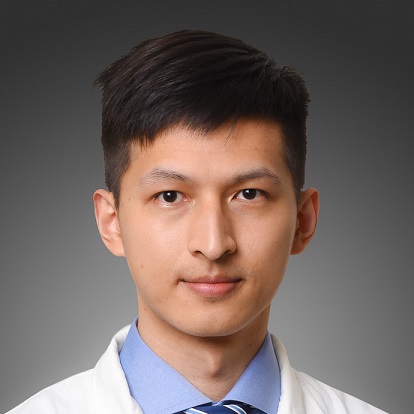Chinese Medicine Practitioner;
Ph.D. student
Department of Ophthalmology and Visual Sciences,
Faculty of Medicine, The Chinese University of Hong Kong

Presenter/Author:
Zhichao HU
Other Author:
Hoi Ying Emily CHAN, Kam-Lung Kelvin CHONG
Author Affiliation:
Faculty of Medicine, The Chinese University of Hong Kong
Keywords:
Dry Eye Disease, COVID-19, Pandemic, Tele-healthcare
Abstract:
Background: Dry eye disease (DED) is a common ocular surface disease worldwide characterized by tear hyper-osmolarity due to abnormal tear secretion or excessive evaporation. This review aims to review the current literature on how the pandemic or COVID-19 influences DED directly and indirectly.
Method: Pubmed and Cochrane were searched from their inception to Aug. 8th, 2022. Related terms of DED and COVID-19 or pandemic were applied in the searching strategy. Studies that meet the criteria as follows were included: (1) studies investigating DED in healthy populations (HPs), COVID-19, or long-COVID patients; (2) clinical studies about the management of COVID-related DED.
Result: Numerous studies have been conducted to examine the potential causes for the increasing prevalence of dry eye disease (DED) during the COVID pandemic. Direct and indirect correlations are found.
For direct correlations, the infection increases the prevalence and severity of DED. Higher viral load is associated with a higher risk of having ocular surface symptoms [1]. And post-COVID patients are more likely to have more severe ocular surface signs and symptoms, even meibomian gland dysfunction. Some of studies suggest that COVID infection will induce small fiber neuropathy, a known morphological landmark of DED, on the ocular surface. Others suggest that blepharitis caused by COVID will lead to DED.
Various COVID-related factors are also found to indirectly cause DED in HPs. The prevalence rate of DED in HPs during pandemic ranged from 33.4-87.2% according to self-reported surveys. Prolonged visual display terminal (VDT) usage is widely reported as one of the main causes. Other common reasons are prolonged or loosely worn facemasks leading to mask-associated dry eye (MADE), as air will disperse upwards and promote evaporation of the tear film. Other factors, whilst not as extensively studied, are also found correlated. For instance, stress, sleep disturbance, and increased time spent indoors are also deemed attributable.
Due to the pandemic, a general decline in the number of outpatient visits was reported around the world, but the demand for eye care has significantly increased. In light of this, the review investigated the possibility of adopting tele-screening for DED as an alternative [2]. Unfortunately, tele-screening is currently incapable of replacing standard ophthalmic examinations to assess ocular surface diseases.
Conclusion: Different practices and lifestyle changes due to pandemics or COVID infection are attributable to the increased prevalence and severity of DED. Further studies are warranted to identify effective early diagnostic and treatment methods related to long-COVID DED. The application of tele-healthcare on smartphone apps and artificial intelligence is one of the directions.
Reference:
Wan KH, Lui GCY, Poon KCF, Ng SSS, Young AL, Hui DSC, Tham CCY, Chan PKS, Pang CP, Chong KKL. Ocular surface disturbance in patients after acute COVID-19. Clin Exp Ophthalmol. 2022 May;50(4):398-406.
Labetoulle M, Sahyoun M, Rousseau A, Baudouin C. Ocular surface assessment in times of sanitary crisis: What lessons and solutions for the present and the future? Eur J Ophthalmol. 2021 Mar;31(2):807-816.
Funding Source:
N/A
Conflict of Interests:
The authors report no conflicts of interest related to this study.
HU Zhichao is currently a Chinese medicine practitioner from Kwong Wah Hospital– the Chinese University of Hong Kong (CUHK) Chinese Medicine Clinical Research and Services Centre. He is doing his Ph.D. degree in the Department of Ophthalmology and Visual Sciences. Faculty of Medicine, CUHK. His research interests focus on the efficiency and mechanism of integrated medicine for ocular surface diseases and thyroid eye disease.